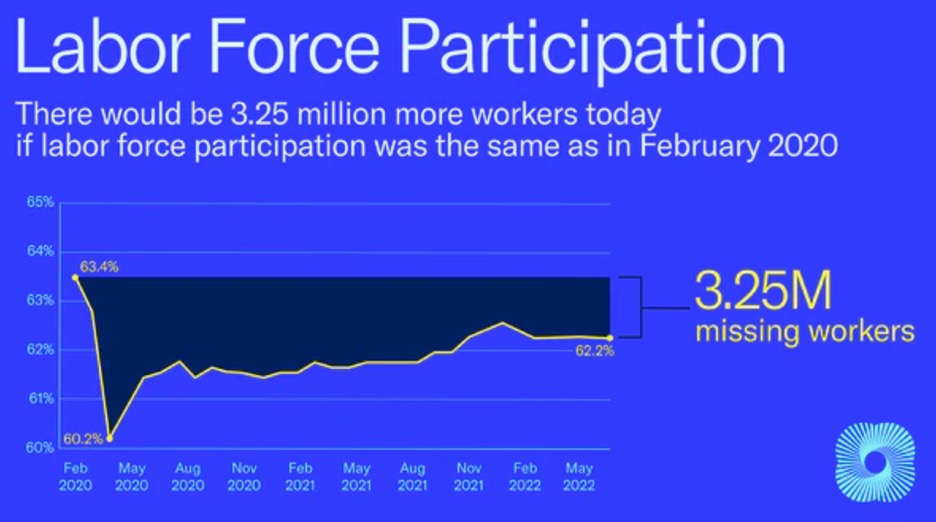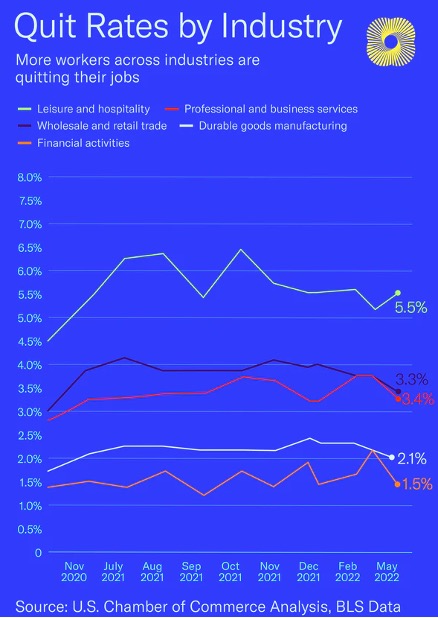The U.S. population that is either working or actively looking for work has indeed shrunk: labor force participation is now 62.2%, down from 63.4% in January 2020. That may sound like a trivial difference, but it adds up to about 3.25 million fewer people in the labor force.
A new study by the US Chamber of Commerce investigates this phenomenon.
The study reads: “At the height of the pandemic, more than 120,000 businesses temporarily closed, and more than 30 million U.S. workers were unemployed. Since then, job openings have steadily increased since January 2020, while unemployment has slowly declined.”

The U.S. Chamber polled workers in November 2021 who lost their jobs during the pandemic to see why they weren’t coming back to work.
33% of women and 16% of men said caring for children or others at home has made returning to work difficult. Other barriers to re-employment were concerns about Covid, health concerns, Covid-related issues in their industry, or simply a greater reliance on others in the household, making it less critical to return to work. Moreover, three million adults retired early because of the pandemic.
Almost half (48%) of those who lost their job said they leaned on pandemic stimulus payments to get by. Thirty-six percent said they used unemployment insurance benefits as a source of income and 29% utilized other government programs or incentives.
The U.S. Chamber study cited a University of Chicago analysis that found 68% of unemployed workers were eligible for benefits greater than their paychecks received while working.
Fifty-three percent of those who became unemployed during the pandemic said they were only somewhat active or not very active in looking for work as of last November. Under half said they are “strongly active” in their job search. The continued worker shortage suggests those figures remain high.
Of course, the labor shortage is not evenly spread amongst sectors.

In-person, low-wage jobs have struggled most to retain workers.
According to the U.S. Chamber study, the food sector in particular, “has struggled to retain workers and has experienced consistently high quit rates.” The manufacturing sector has also floundered. The study reads, “Even if every unemployed person with experience in the durable goods manufacturing industry were employed, the industry would only fill 65% of the vacant jobs.” Meanwhile, higher-paying industries have seen fewer quits.
The tradeoffs for massive government stimulus and government shutdowns are significant. As with most government interventions, lower-paying sectors were disproportionately harmed.
"As with most government interventions, lower-paying sectors were disproportionately harmed."
During the pandemic, the government stood between workers and their paychecks and then paid them more than their wages with stimulus and unemployment benefits. Certainly, some workers have left their low-paying industries for better-paying jobs and more flexibility.
But overall, low-wage jobs have been slowest to return, disrupting entire sectors. Government-induced inflation also wreaks disproportional harm on low-income families. And as the economy struggles to find a soft landing and avoid a recession, it is the low-wage workers that are at the greatest risk.







